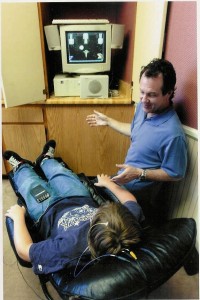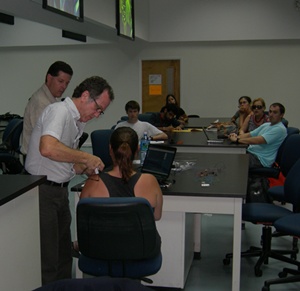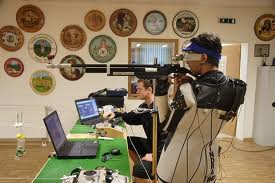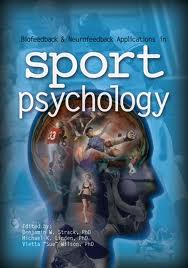Articles of Interest
 The Marriage Mystery; How Do They Survive Over the Years?
The Marriage Mystery; How Do They Survive Over the Years?
With divorce rates higher than any other previous generation, people will speak of successful marriage like a code that must be unlocked, a foreign language in need of translation. Is marriage so mysterious that only a lucky few are able to figure out how to make it last? When we hear of a 50th Wedding Anniversary we ask, “How did they do it? What are their secrets?” What can elderly couples with 40-50+ years of marriage behind them tell us, if anything? Do they know something that we don’t? Did they decode the mystery, or did they find out that there really was not much of a mystery after all?
We hear the statistic thrown around all the time; approximately 50% of marriages end in divorce. While the numbers are a bit more complicated, it’s obvious that there are many couples in America that cannot solve the “mystery” of a lasting marriage. According to Dr. Pepper Schwartz’s column at AARP.org, elderly people have many of the same issues in their marriage as us younger folks. They worry about money, and sex, and everything in between. If they can make it through, surely they can tell us how to do it.
In searching out the best advice from elderly people I found that their grandkids are often the keepers of the secrets. One woman on an internet forum discussion said her grandfather gave her some great marriage advice, “He said “You won’t always feel like your in love” but if you stick it out, it will come back. Don’t bail on your marriage.” Another poster worked with elderly people and shared her favorite piece of advice from a man that had been married for 63 years, before losing his wife. He told her, “We never fell out of love with each other at the same time.”
In 2010 the Wall Street Journal interviewed elderly couples for their best advice. The highlights from a variety of couples were:
· Choose Your Battles: Save the fighting for the big, important stuff in life. Bickering tears at the fabric of your relationship. Refuse to be the couple that bickers over everything
· The Golden Rule: Speak kindly to each other
· Maintain healthy boundaries. You are two people. Keep it that way
· Give each other some space. Let your spouse have time for the things they enjoy, and a place for their things. Let them be their own person
· Laugh. In the interview Jackie Egan, 69, married 40+ years said, “You need to learn to find the humor in each other’s annoying habits. It helps you keep the affection.”
The advice most elderly couples give is simple. It is the same guidelines that we should strive for throughout our lives. Don’t sweat the small stuff, be nice to each other, and strive to be healthy in mind and body. Allow your spouse the room to be themselves, maintain your identity, back off occasionally and give your spouse room to be themselves and to make mistakes, and laugh at the little things. Save the fights for the stuff that matters. And if you are in a battle that seems unsolvable, see a good psychotherapist who might be able to help in opening lines of communication and minimizing fight-flight reactivity. This is something I do in both my West Los Angeles and Newhall (Santa Clarita) offices.
It turns out there is no real mystery after all. The code has already been broken. The difficult part is making the conscious choice to be the spouse you want to have. To decide to make your marriage work, organize you’re your thoughts in the pro-active positive attitude of success and to do the work to make it happen; that is the key to the “mystery.”
 The Neuroscience of Love
The Neuroscience of Love
When we think of romance, we rarely think about the science behind it. Love essentially relates to feelings and emotion, correct?
It turns out however, that the human mind plays a greater role in influencing love than we first believed and that thoughts have a major influence on the brain. Neuroscience is the study of the functions, chemicals, energy and structures that make up the human brain and nervous system. Neurotransmitters are the chemical communicators of our bodies. Neurotransmitters act as a third wheels in our love affairs, steering us toward the ideal mate. What role does evolution play in our choices and in our relationships?
Common Neurotransmitters, at least to this discussion, are Serotonin, Dopamine, Oxytocin, Norepinephrin, Vasopressin, Adrenalin and Melatonin. You will more than likely have heard of these. Melatonin may be relevant if you have issues with sleep. Dopamine, Norepinephrin and Oxytocin are the key neurotransmitters associated with love, trust and pleasure. Researcher Helen Fisher studied “10 women and 7 men” who claimed to be “intensively in love” over a period of “1 to 17” months. Using MRI scans she showed increased activity in “dopamine-rich areas associated with “reward and motivation.” The study added to increasing evidence that our brains are partners in our pursuit of the best mate. Evolution is the suspected catalyst for this brain behavior. This makes sense, since meeting a mate and producing offspring is a necessary drive for survival of our species.
In child bearing years most of us know we want to have children. But is it the “want” of children and taking our place in our family history or is it our evolutionary background and need for species survival that has such power over us that we are “helped” along the way by chemistry? After all, evolution would get us nowhere if we did not pass on the best of our genes to the next generation. For people who wait to have children they are intimately familiar with the “ticking clock” that gets louder and louder as there evolutionary purpose awaits. Does this mean we have to listen to these chemicals? Do we have a choice in our mates? Of course not, but it seems the “right one” sets off the parts of your brain that motivate and reward you well past the baby making years. You get, in return for the “right” choice, good feelings from the boost of Dopamine, and you get that cuddly, warm, bonded feeling from the Oxytocin. Ironically, Oxytocin is the neurotransmitter responsible for the onset of labor in pregnant women. It’s what you would call a, “multi-tasker.”
It is good to know that there is some science involved in our choices. The chemical states create mind states that are part of our drive to stay together, and in staying together couple typically wire together, taking on similar values, idea sets and customs. Couples who also learn and practice problem solving skill continue to advance the chemical romance. And couples that continually stress one another out…. well, they end up throwing a little cortisol into the equation and this can make for emotional distancing, avoidance and disgust. A skilled therapist would know how to bring to focus that which is working in favor of the relationship and that which is working against the relationship and be able to help create bridges to up intimacy, romance and feelings of love, something I try to do with couples seen in my offices in West Los Angeles and in Newhall (Santa Clarita).
Above artwork by Michael Hankin is titled Heart of the Palm
Divorce Mediation – Good for Parents & Even Better for the Children by Barry Davis
Divorce mediation allows the parties to deal with their issues in a productive, flexible and client-centered manner while also avoiding the costs of litigation. It also saves money, time and energy that will all be needed to create two households out of one. And a successful mediation can also help the parents develop the healthy co-parenting relationship their children will need going forward.
By focusing on what is best for the client and their children in the long run, the mediator helps each party move past the negative emotions and finger-pointing common in divorce.Instead, the clients learn constructive ways to address their issues, generate options and create a mutually acceptable agreement. The entire process is confidential and the participants make all the decisions and maintain full control over the outcome (no agreement is reached unless both parties agree).
The issues that need to be addressed during a divorce are often complex and highly-charged. Yet with the right balance of structure, effective communication (facilitated by the mediator) and mutually beneficial compromise, couples can navigate this difficult period with a minimum of discomfort and disruption.
In her seminal book “The Good Divorce“, Constance Ahrons, Ph.D. presents conclusive evidence that parents are not doomed to a life of bitterness and children are not doomed to always being in the middle of conflict. If parents can find ways to effectively address the strong emotions and uncertainty associated with divorce, they can constructively move on with their lives and nurture their children.
In “The Truth about Children and Divorce“, Robert Emery, Ph.D. takes this a step further by studying the effects of mediation on high-conflict parents. He randomly assigned parties who had filed for a custody hearing to either mediation or adversarial settlement. His findings show that even though the mediations were brief, an average of only five hours, the results were very significant:
- 75% of the ‘adversarial’ group ended up going to court, while only 20% of the ‘mediation’ group went to court.
- 52% of nonresident parents who mediated spoke with their children weekly 12 years later compared to only 14% who went to court.
While there is no doubt that divorce issues are often complex and highly-charged, divorce mediation can provide couples with the right tools and guidance to successfully navigate this difficult period with a minimum of discomfort and disruption and keep money in the bank for the children’s college education.
About the Author:
Barry Davis is a divorce mediator with a practice in Manhattan Beach. He holds Masters Degrees in Clinical Psychology and Conflict Management, is an adjunct professor at Azusa Pacific University & serves on the Torrance Family Court and Second Appellate District mediation panels.
 Brainwave Training for Attention Deficit and Other Disorders
Brainwave Training for Attention Deficit and Other Disorders
Brainwave biofeedback, or Neurofeedback, is a specialized field of Biofeedback therapy with almost 40 years of research in peer reviewed journals and clinical application for Attention Deficit Disorder, Seizures, Fibromyalgia, Sleep disorders, and Depression. Neurofeedback has been utilized to successfully treat children and adults with certain learning and developmental disabilities in the areas of reading, writing, spelling and math, as well as Attention Deficit Disorder (ADD). More specifically, EEG (electroencephalogram) electrodes are used to measure brainwave activity from various parts of the brain. The person being treated is given visual and auditory feedback in the form of a computer video game, which is controlled by his or her own brainwaves. As they are rewarded for producing healthier brainwave patterns, such as those that are necessary to the task of paying attention r inhibiting impulses, they score points and the brain learns to re-regulate into healthier self-regulated synaptic patterns. Often, medication can be lowered or completely removed and change in behavior is obvious.
Treatment has been so successful that several school districts have use neurofeedback within their counseling programs to treat ADD and enhance academic peak performance. In fact the Italian soccer team that won the world cup a few years ago used Neurofeedback as a strategy in their Peak Performance Training as do other Olympian athletes. This work has been reported in Psychology Today, Parade Magazine, Newsweek and National Public Radio to name a few news sources.
The 1990’s, dubbed the “Decade of the Brain” by former President George Bush, brought vast amounts of information to support the fact that attention deficit disorder, with and without hyperactivity, stems from deficits in brain information processing. In the ADD child’s developing brain, cells or neurons, which normally learn to efficiently interface with one another and take on more and more activity, do not take on the proper working matrix. This may happen for a variety of reasons and has no bearing on intelligence. These children have difficulty arousing brain cell stimulation in important parts of the brain such as the frontal cortex and sensorimotor cortex. Arousal is slower than normal and thus, the child has difficulty integrating sensory input from the world with motor reflexes. When given certain medications such as amphetamine, neurons increase in activity, working at a faster frequency to help communicate efficiently with one another, and the child can now properly tend to the environment and focus attention. Unfortunately, chemical stimulation is short lived and has side effects, which concern many parents and which have recently been called into question by the FDA.
With Neurofeedback, most children learn to increase the stimulation of these sensorimotor neurons naturally, thus facilitating stronger synapses and more brain wave activity. Learning to increase amplitude (power) in the 12-32 Hertz (beta, a fast frequency) while learning to decrease a 4-8 Hertz (theta, a slow frequency) are typically the primary objectives of Neurofeedback Therapy. Once these neurons begin to work properly and network together, they help with the child’s behavior, test scores and attentional state, and they generally will be that way throughout the life of the child and into old age.
Steven C Kassel has been offering neurofeedback in Santa Clarita since 1985 and in West L.A. since 2002.
So many questions come from patients in regard to making the right partner choice: Is this the right person? Do I even need a partner? Have I made a mistake by marrying him/her? Will I ever find the right one and even if I do, how will I know it? Did we just grew apart? Were we supposed to be with each other in the first place?
“Who Needs Marriage?” a recent Time Magazine cover story,explores this issue. It looks at statistics, attitudes, and how differences in socioeconomics and experience are at play. But there is more tugging at the stability of the institution of marriage than even the article can address. Just in my lifetime, I have seen a dramatic shift, not only in gender roles as women have had more autonomy (the pill, increased presence in the workplace), but in technology and how we spend our time.
Nature has provided us with the ability to connect with one another. After all, mutual survival and the continuance of our species, especially our offspring, depend on pairing and relationship to the larger community. That is how we overcame threats from weather, predators, and food shortages, to name a few. In recent years, scientists have learned about mirror neurons, special types of brain cells whose purpose is to be able to read what another person might be feeling. An unhealthy mirror neuron system or damage to the prefrontal cortex such as from a blow from a historical football injury, as in the case Danial Amen, MD points out in his newsletter of November 30, 2010, can lead to marital tension. A healthy mirror neuron system almost inevitably ensures a healthy relationship, because each partner, in a way, takes in the experience of the other, and empathy creates a sort of wiring that helps us grow closer in love, happiness, safety and security.
Though we are wired to connect, our modern lifestyles have brought challenges to marriage that were not as plentiful in the days of our grandparents. The challenges are in the domain of choice and distraction. Affluenza, the illness of keeping up with the Jones’, brings us away from being tuned into one another by the very fact that we have more “stuff” for which to care, and satiation by acquiring more seems fruitless. Stats show that Americans are not as happy as they were 50 years ago when they made 5000 less decisions each day. As professor Barry Schwartz points out in his book and YouTube Video, The Paradox of Choice; Why Less is More, all these decisions make for more stress.
More stress tends to distract us from living in the moment. For example, with stress neurochemistry, the mind and body organize to overcome the stressor as we go into a survival mode. We may have the social skill sets to look as if we are okay inside, but the reality is that we are distracted, and if we are asked a question that needs a heartfelt or genuine response, we are not 100% there. Research also shows that multi-tasking hurts the brain’s ability to focus. If we are driving and talking on the phone at the same time, the brain loses efficiency because our attention is divided and we are less prone to see and process the distance between our car and the next. So it goes with couples – if there are too many distractions, too much stress, and not enough time to recover, the relationship suffers. If you mix in unresolved interpersonal issues and hanging resentments, couples find they distance or turn away in irritation or disgust. A truly skillful couple knows how to repair broken moments and nurture the “ouchies.” A successful couple knows how to communicate needs, listen to their partner’s needs, take the time to compliment or show appreciation, and do the repair work necessary to keep feelings from being too hurt and neurochemistry from building a fortress of safety. It’s as if our ancestors used to have common stressors which, when overcome, would bond them. In today’s world, the dragons we individually slay tend to divide our closeness and intimacy. With each experience, neurons fire together, then wire together in either a positive or negative way. A good therapist will know how to help make more positive experiences happen.
We are wired to connect, and we have it in us to choose to connect in positive rather than negative ways. Overwhelming ourselves with too many toys, distractions, or responsibilities can be detrimental to the relationship. When couples are empathetic and tuned in to one another, they desire to re-wire. The issue of being in a mistaken relationship rarely arises because both have grown together and know they are right for one another.
Above artwork by Bob Grove, PhD of Physiopilot
In 2011 I had the honor of assisting my colleague Michael Linden, Ph.D. of the Attention Learning Center at an ADD conference at the St. George Medical University in Grenada in the Caribbean Islands. Five workshops were presented to medical students who were curious about alternative treatment of ADD, Autism and Asperger’s Syndrome. Dr. Linden is best known for his 1996, “A controlled study of the effects of EEG Biofeedback on Cognition and Behavior of Children with Attention Deficit Disorder and Learning Disabilities” and has clinical offices in Orange and San Diego Counties.
Optimal Holiday Health
Of all the holidays through the year, the winter holidays have the most potential for either too much joy or too much stress, often a combination of the two. Most of us would desire to cultivate the positive emotions, and there is much of it as we gather with friends and loved ones, but there are also negative/stress factors that can also ride through the season and land us in January with bigger bellies, awkward interpersonal experiences and larger amounts of debt.
Unresolved historical family conflicts often get reinforced as family members vie for control, avoid discussions and get-togethers or confront issues that are best dealt with at another time. A heightened level of stress can occur from poor dietary habits of increasing sugar and alcohol intake, racing to get to EVERY possible social and family event, over-vigilance to shopping to make sure no one is left out when presents are exchanged and/or feeling bad (especially this year) that one did not spend enough to make others happy.
When we come to the dinner table, we may be unaware of what others are feeling because we may be too wrapped up in our own “stuff” and busy trying to make everything look just right.
It is unfortunate that there are some of us who do not have anyone with whom to spend this joyous time. We all know what it feels like to want to be invited to a party. Being left out of Holiday activity forces many people to focus on their own loneliness and it may rekindle feelings of low self-esteem. Many people become depressed or anxious this time of year by other holiday stressors. People who drink alcohol, drink more alcohol this time of year and people who like to eat a lot, eat more this time of year. Alcohol, a nervous system depressant, can depress feelings causing sadness, insecurity or other negative emotions. Sugar, in more food than just candy, stimulates the nervous system. The sugar “high” is followed by a physical low, and this can contribute further to depression and stress.
So what can be done to avoid ill physical and emotional health? Choosing a healthy lifestyle and sticking to it is the best regimen. The following list will give you some tips on handling holiday stress.
- Decisive planning and realistic expectations create new ways of experiencing holidays without experiencing “holiday blues” or anxiety.
- Get plenty of sleep and take time out several times during the day to relax by breathing deep and lowering your muscle tension.
- Limit your intake of unhealthy foods and alcohol to keep your body and brain at optimal performance.
- Stick to your budget and use your credit cards less. Your loved ones will appreciate any gift you give, even those costing less. With less to pay off in January, you will have more to spend on flowers on Valentine’s Day.
- Deal with family confrontations diplomatically. Abrupt family arguments during family get-togethers tend to be exaggerated and over-heated and leave bystanders embarrassed and tense. Set a later date for stressful family discussions and work out problems once and for all.
- Limit your social engagements. Rather than extending your time (and stomach), spend more quality time with yourself or family. However, if you find yourself alone or feeling blue, call a friend or relative and tell them you’d like company. Take a risk and let people know what you want.
- Volunteer your time and energy to the needy. Serving dinner at the Salvation Army or sharing cookies with seniors in convalescent homes are wonderful gifts. Nothing that feels better than the joy of giving and studies on altruisim show the heart is healthier in these moments of giving.
- Friends or acquaintances that may be newly divorced, new in town, or alone for whatever reason would be ever so grateful to be invited into your home for holiday warmth and cheer with your family.
- Exercise. If you are starting a plan you will want to consult with your doctor, but if you have a routine, do it more! Its good to work off those extra calories and its good for the brain!
By making your mental and physical health a priority, you make the season more joyous for yourself and others. You can have happy holidays with some solid planning, realistic expectations and treating yourself to some tender loving care.
|
| “Athletes are constantly seeking ways to enhance their performances. Physical exercise, sport-specific drills, and the analysis of mechanics have long been the focus of players and coaches,” said Shawn Green, author of The Way of Baseball and 15-year MLB veteran. “In recent years, however, much more attention has been placed on the mental side of competition.”Biofeedback and neurofeedback hold tremendous potential in sport and performance applications to train the body and mind to work together, but remain under utilized. This innovative handbook includes many specific exercises for athletes and detailed “how to” instructions for professionals interested in these progressive techniques.”This book does an exceptional job of acting as that ‘mental game’ coach for athletes in any sport. It dives into the most cutting-edge psychological techniques behind peak performance, giving the reader creative tools to self-regulate–which is critical in fulfilling one’s potential,” said Green. “During my years in Major League Baseball, I found that the sooner I was able to recognize my body’s physiological signposts of a suboptimal mindset, the sooner I was able to recalibrate my focus.”The tools in this book have the ability to empower its readers with a gift that can monumentally impact not only their successes in sports, but also their successes in any endeavor. The reader will close this book with an understanding of the skills needed to gain control of the stress and anxiety associated with competition. Not only will readers reach new heights in performance, they will also find a greater level of fulfillment.Reprinted with permission of AAPB |
 Biofeedback & Neurofeedback in Schools K-12
Biofeedback & Neurofeedback in Schools K-12
Children using Neurofeedback in the counseling office in Thailand school.
In 1986, I took a workshop with Educational Psychologist Loretta Englehart of Spearfish, South Dakota. She was teaching students at her school how to control respiration, relax muscles and warm their hands, to help them decrease anxiety and focus in the classroom. With the help of William S. Hart School District’s psychologist Marlene Curwen, I used her Dr. Englehart’s 10 lesson model in a pilot program in 1987 at Saugus High School with 10 Behavioral Emotionally Disturbed (BED) students at Saugus High School in Santa Clarita. Every week, I taught the students something new about stress physiology and a means of controlling it. Students were hooked-up to computerized biofeedback instruments and quickly learned to decrease muscle tension (measured at the shoulders) and increase hand temperature, both indicators of relaxation response, as measured by comparisons of pre to post testing. Teacher and counselor ratings also indicated improvement in behavior. This model was repeated at several other schools including a few years later for Academic-but-Anxious students at Sierra Vista Middle School, with the help of principle John Curwen.
In 1998, I had the pleasure of visiting the Enrico Fermi Elementary School in Yonkers, New York to see the program they had for students who had difficulty paying attention in class ( see NY Times, 2000). Utilizing 4 Neurofeedback instruments, psychologist Mary Ann Sabo and 2 EEG tech staff worked through the school day hooking up students who arrived at 15 minute intervals to learn how to decrease slow brain wave rhythms (theta waves) and increase fast ones (beta waves). This program was a great success and several other school districts around the country, if not already doing so, began to employ neurofeedback to help their students pay attention. EEG Biofeedback or Neurofeedback is an operant conditioning learning technique that is site and frequency specific to EEG rhythms of the brain. More info can be read at ISNR.org’s Comprehensive Bibliography.
For the next 7 years, I had further honor of presenting a workshop titled Biofeedback and Neurofeedback in Grades K-12 at professional conferences in the U.S. and one in London. I would be happy to present at your school!
 Sean Casey’s Neurofeedback Story by Siegfried Othmer
Sean Casey’s Neurofeedback Story by Siegfried Othmer
For a number of years now I have been hearing from Leslie Coates in Florida about his work with a top-rated hitter in baseball. For reasons of client confidentiality, I never had a name to go with the story. When reporters would ask us about sports applications, the best story of all had to remain somewhat amorphous. At this year’s ISNR Conference the audience got to hear about the training directly from the person involved, Sean Casey, in a joint presentation with Leslie Coates and Wes Sime.
Sean Casey started out auspiciously in baseball, with a batting average of 0.461 in college at the University of Richmond. He was drafted into the Major Leagues by the Cincinnati Reds ten years ago, and soon after a promising start he was hit in the face by a ball he wasn’t expecting. The bones around the eye socket were broken, and although he tried to keep playing, his batting average hit bottom: 0/30. He was sent back to the minors, where he connected with sports psychologist Wes Sime, with whom he worked for two years. To read the rest of this story click here.











